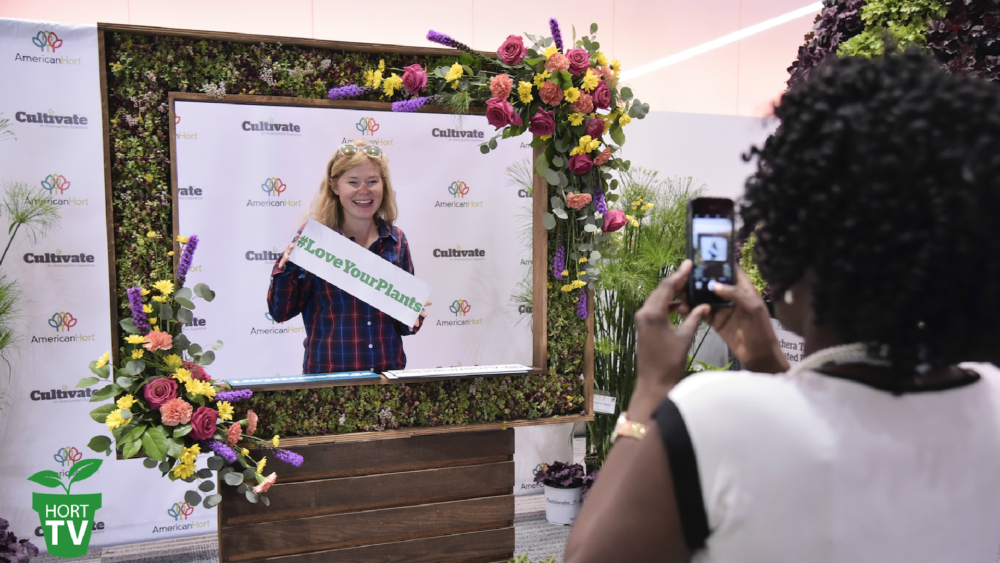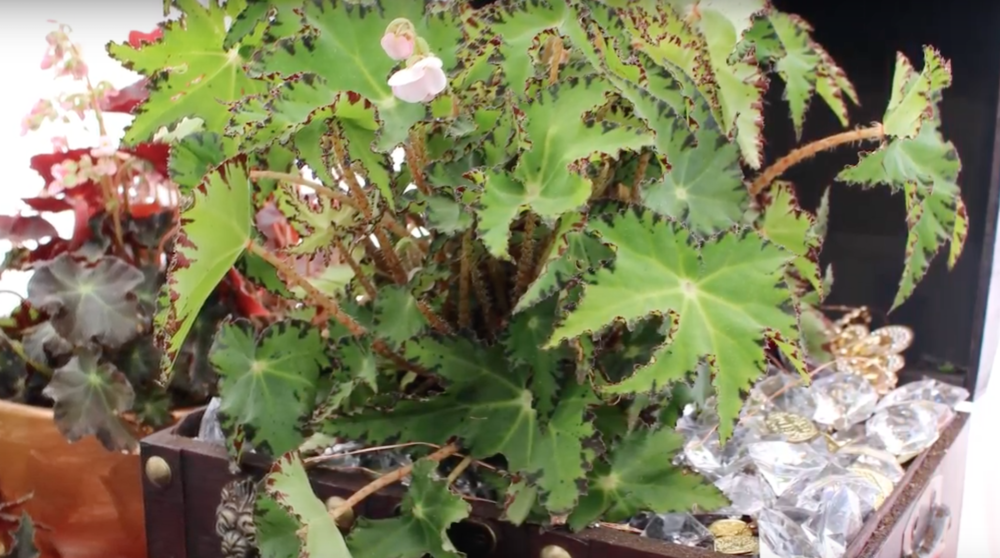The Impact of Display Gardens on Consumer Purchasing Behavior
Retail garden center sales in Florida have rapidly increased in the past few years, and identifying shopper purchasing patterns and generating consumer behavior data are important to the Florida wholesale and retail plant industries. To investigate this trend, floriculture researchers at the University of Florida initiated a research project involving two studies funded by the Florida Nursery Growers and Landscape Association. Study 1 investigated the influence of retail displays a traditional bench, end cap and an island display on consumer behavior, while Study 2 measured the impact containerized plants placed as display gardens have on purchases. In this article we will discuss our research findings from Study 2.
Painting a Picture
Display gardens inspire both new and experienced gardeners by helping them visualize design and plant performance. As a marketing tool, display gardens are colorful and educational, captivating and informative. An attractive display garden helps sell plants and other materials by giving customers new ideas about plants, hard goods and garden themes. As with displays, attractiveness influences impulse buying and unplanned purchases, so well-designed display gardens are sales boosters.
How Do Consumers Shop?
Proper product placement is also essential within a retail establishment. Paco Underhill, author of Why We Buy: The Science of Shopping, says that all retail experiences follow a standard pattern. Men and women, young and old, alone or as a family, have different ways of shopping. The challenge for retailers from an upscale megastore to a farmers’ market is to enhance the shopping experience and promote sales. Underhill’s research shows that the shopping experience goes through five stages, what he calls “zones.”
Five Zones. His five zones are the landing, transition, destination, transaction and exit. Within a garden center, the landing zone ranges from the road signs to the initial welcome by the retail staff. The transition zone is the point of entry: the doorway space and overall presentation that clarifies the space at the garden center. The destination zone is where product is displayed and offered for sale. Here, there is space to shop and display products, along with a hovering zone for people who are accompanying the shopper but not actively involved in the purchase process. The transaction zone is where the actual sale is made, and goods and services are exchanged. Finally, the exit zone is the departure point to facilitate the removal of the items that were purchased and to encourage a return visit from the customer.
Within these five zones, three represent the areas where most of the purchasing decisions are made: landing, transition and destination zones. Among these, it is important to determine which location generates the most consumer purchases so that displays can be created for maximizing sales. Equally important is determining whether containerized display gardens are beneficial within these three zones to influence consumer purchases.
Consumer Purchasing Patterns
Consumer purchasing patterns of displays in three different retail zones using display gardens and traditional rows to feature the plant material were studied on April 15 and 16, 2006, at the Emerald Coast Flower and Garden Festival on the Pensacola Junior College Campus in Milton, Fla. Three different themed containerized display gardens were created, which featured low-maintenance plants, ornamental grasses and white flowering plants.
These display gardens of containerized plants were placed in the landing, transition and destination zones. Behind the containerized display garden, the same type and quantity of plant species were displayed in traditional rows. Each display garden or row consisted of six different plant species with three replications of each. Customers could purchase plant material from either section, and all species were advertised by a 4×6-inch sign card containing 4-5 plant attributes and a color photograph. Consumer behavior was linked to the purchases made from the garden or row of plant material. Purchases made in the landing, transition or destination zones were also recorded. Consumer preferences and demographics were collected using a post-purchase survey.
The survey asked 14 questions, including:
- How did you learn about this retail operation? Newspaper, radio, Internet, marquee/billboard, word of mouth or other.
- How often do you typically purchase plants? Rarely, seasonally, often.
- You bought plant material today because: As a gift, for the garden, season to plant, enjoy shopping, interior houseplant, hurricane replacement, patio plant, unique or unusual, other.
- We observed your purchase today. Why did you choose this display? Attractive, convenient, well-stocked, had to have, clean and easy to shop, well-labeled, spontaneous purchase, atmosphere or no reason.
- What drew you to the display? Color combination, salesperson, signs, quality of plants, quality of display, plant type, structure of display or nothing.
- Do you think the display garden affected your purchase behavior? No, somewhat or yes.
- Did the display garden provide you with design ideas? No, somewhat or yes.
- Are you pleased with the quality of the plants? No, somewhat or yes.
- Gender: Male or female
- Age: 15 to 24, 25 to 34, 35 to 44, 45 to 54, 55+
- Household Income: _ $10,000; _ $10,000; _ $20,000; _ $40,000; _ $60,000; _ $80,000; _ $100,000; _ $120,000; _ $140,000
- Education: Not a high school graduate, high school graduate, college tech graduate, four-year college graduate, graduate degree or other.
- Number of adults in the household
- Number of children in the household
Over the two-day plant sale, the three display gardens placed in the landing, transition and destination zones yielded 98 plant purchases, with 43 responses to the post-purchase survey.
Purchases were similar in distribution (32.7-34.7 percent) among the three retail zones. When comparing the three garden themes, the all-white garden (39.8 percent) and the ornamental grass garden (37.8 percent) had more purchases than the low-maintenance garden (22.4 percent). A similar number of plants were purchased from the containerized display garden (49 percent) when compared to the plants displayed in rows (51 percent).
The post-purchase survey generated 43 responses. When asked the question whether the display garden affected customers’ purchases, 31.7 percent answered somewhat and 34.1 percent answered yes. Then, when asked whether the display garden provided design ideas, 28.2 percent answered somewhat and 38.5 percent answered yes. Of the respondents to the survey, 79.1 percent were female and more than half were age 45 or above (76.7 percent). They had an average annual household income between $40,000 and $100,000 (55.8 percent) and 81.5 percent had at least some college education.
Conclusions
The use of display gardens of containerized plants provides ideas for the gardening public. In our study, purchases were equally distributed among the shopping zones, thereby showing the importance of product display in the landing, transition and destination zones. And displaying plant material as gardens or in traditional rows allows customers more choices as they shop the retail floor.
Appreciation given to faculty, staff and students of the West Florida Research and Education Center for technical assistance. The authors would also like to thank the Florida Nursery Growers and Landscape Association for grant support.

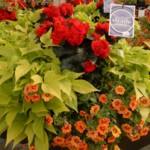






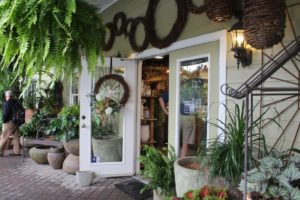
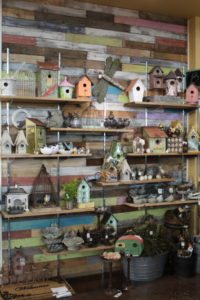
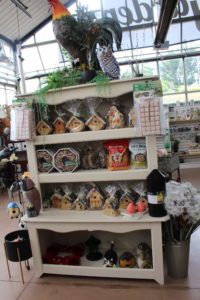
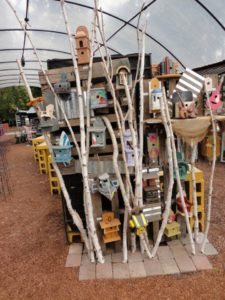
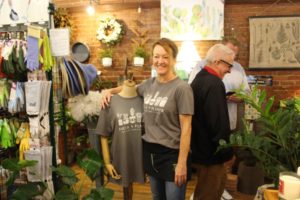

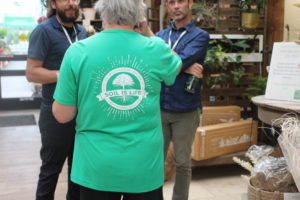
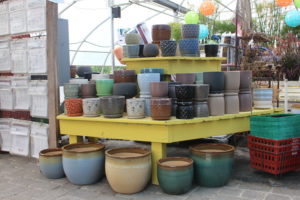
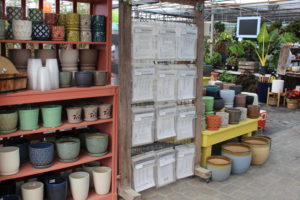

 Videos
Videos
